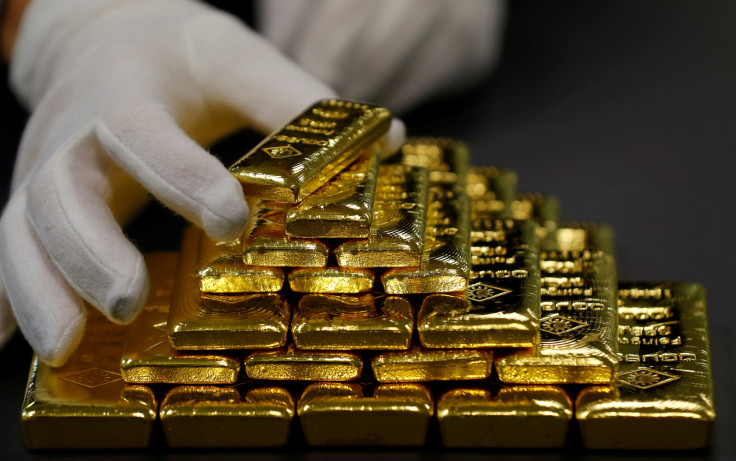A new gold standard in the age of blockchain
Increasing currency volatility rings alarm bells and calls existing monetary system into question.
Increasing currency volatility has made global headlines in the last couple of weeks. The pound fell to a fresh low, taking it to the lowest level against the dollar in nearly a year amongst post-Brexit no deal fears.The collapse of the Turkish lira also made headlines, along with the growing fear of contagion to other emerging market currencies. Dramatic currency volatility is a cause for concern around the world and has left people at the mercy of central banking policies and political instability.
Historically, fiat currency has never endured a long existence. In fact, every fiat currency since its inception by the Romans has experienced devaluation collapse. This has had significant negative implications on that currencies' respective economy as well. Similarly, existing fiat currencies are also proving to be a poor store of value. Central Banks manipulate the value of money at their discretion to suit the various monetary policies at different points in time. In recent news, the Bank of England has ploughed billions of the Treasury's foreign currency reserves into euros since the Brexit referendum, hedging their bets against the devaluation of the dollar as a store of value.
Against this backdrop, the evolution of blockchain and cryptocurrencies have opened up new opportunities to ensure decentralisation and stability. However, current blockchain payment systems and their cryptocurrencies have suffered from severe price volatility, limiting their holder's desire to be used as tender. Four years of volatility in the stock market can be covered in a month of pricing movements in the cryptocurrency markets. A large part of this is owing to its lack of intrinsic value.
Cryptocurrencies generally don't return dividends, and just a tiny amount of the total value of the currency goes into evolving it.
These characteristics prevent mass-adoption, as a currency must be stable and mimic a fixed article of exchange in an economy. For example, a business with budgeted profit margins takes a significant risk in accepting these currencies as a form of payment, or as a reserve currency to sit on their balance sheet. Money was created to serve and bring efficiency to commercial transactions. While the early cryptocurrencies have laid the blueprint for a decentralised future, their current limitations prevent their sustainable use in commercial applications.

But what if the answer lies in taking a few steps backwards?
Gold and silver remain age-old mediums of exchange and a stable store of value. These precious metals are imperishable and portable and have always played an important part in the international monetary system. However, their limitations as a modern monetary system is rooted in the fact that there is no yield attached to them, limiting the incentive to use them in transactions.
Gresham's Law of Money – "bad money drives out good," describes an inherent problem plaguing both traditional cryptocurrencies and asset-backed currencies. This problem is demonstrated with gold and silver, where those who hold it over legal tender or fiat currency typically do not wish to spend it, choosing the less valued fiat currency for everyday transactions.
Asset-backed currencies' final major problem revolves around security. Historically, there have been multiple cases of fraud involving the use of precious metals and other assets as a payment solution. An investor must be cautious in who they invest with in order to avoid the risk of fraud and theft. For this reason, asset -backed cryptocurrencies have also proven somewhat problematic..
For example, recently, Tether, a company that issues a widely traded cryptocurrency purported to be backed by US dollars, has been subpoenaed amid secretive circumstances surrounding the USD backing of their cryptocurrency.
The need of the hour is a secure, efficient, and fair monetary system – one that combines the age-old stability of gold and silver with the efficiency of transactions on the blockchain. This system would combine new world decentralised technology with the oldest, fairest, and most sustainable form of money, to empower all participants to be their own central bank.
To add to its usability, an added feature to this system would be the ability to spend this digitised gold as fiat currency through a debit card, accepted as widely as Visa/Mastercard. To defy Gresham's law and overcome the failures of other asset-backed currencies, this system should incentivise transactions to ensure constant movement within the system. This can be done through attaching a unique multifaceted yield system that promotes exchange and fairly shares the wealth generated according to participation and capital velocity.
The mission of this monetary system would be to deliver an internationally usable monetary system, designed to give back to those who participate, and thus, create a solution for the global need for sound, reliable money. Given the systems stability and security, participating would be inherently less risky and would offer potentially greater return.
Thomas Coughlin, CEO of Kinesis, explores reasons for increasing currency volatility and the future of global currencies
© Copyright IBTimes 2025. All rights reserved.






















